Low back pain of an episodic or constant nature often indicates that an inflammatory or degenerative-dystrophic disease is gradually forming in the body. Early diagnosis of this disease can increase the chances of a full recovery. Pain in the lumbosacral region of the spine may indicate osteochondrosis, hernia, protuberances, infection, or internal organ problems.
Why does the lower back hurt
If a person complains of painful manifestations in the lumbar spine, the doctor first expresses suspicion about the patient's problems with the musculoskeletal system. And only after the exclusion of such diseases, a thorough examination is carried out in order to assess the condition of internal organs.
<1_img_centerxx>Indeed, there is a general innervation of the lumbar vertebrae and intervertebral discs with the trunks of nervous tissue. For this reason, the appearance of pain, for example, in the digestive organs, can be attributed only to the lumbar region. Let's take a closer look at some of the causes of low back pain.
Excessive loads
It is a relatively natural source of back pain. With hard physical work or active sports training, muscle tissue is exposed to excessive stress. It accumulates lactic acid, which irritates skeletal muscle tissue. As a result, in addition to pain, a person notes the appearance of a sufficiently strong burning sensation. Any discomfort goes away after a short break, as lactic acid is excreted by the muscles.
In case of low back pain every time during exercise, if their intensity remains unchanged for a few hours, you should consult a doctor. Excessive training, lifting heavy objects often provokes the appearance of microtrauma in the discs and vertebrae, the formation of diseases of a degenerative-dystrophic nature.
Osteochondrosis and intervertebral hernia
Lumbar osteochondrosis stages I, II and III is the leading cause of back pain. At an early stage, the patient worries about a slight discomfort, indicating a slight destruction of the intervertebral discs.
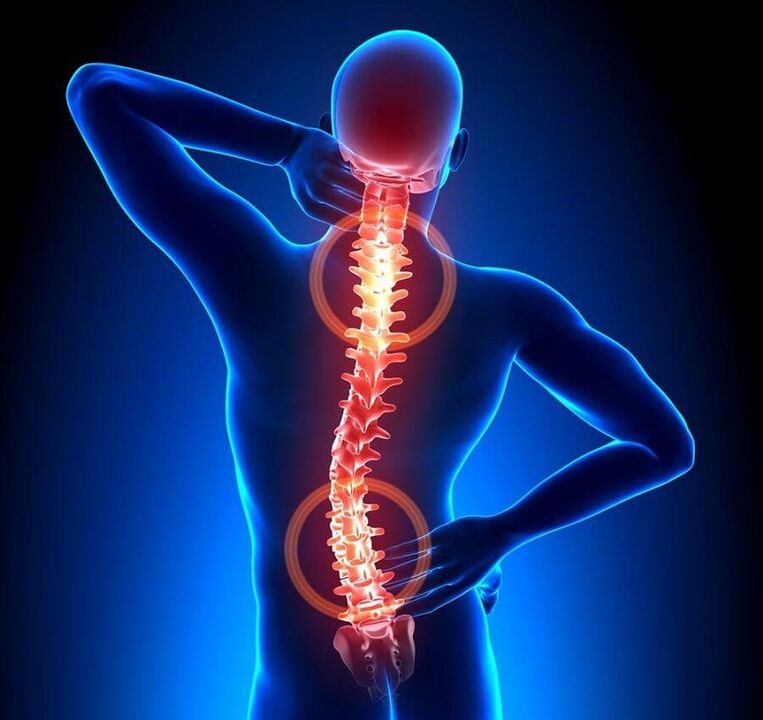
In the event that the patient during this period turned to a neurologist for help, a complete cure of the disease, as well as partial restoration of the destroyed tissues, is possible. Sharp, intense pain that increases when bending or twisting the trunk indicates serious damage to the structure of the spine.
Against the background of the radiological degree of osteochondrosis II or III, the formation of hernias or protuberances is often observed. Due to this, piercing pain appears, and it is also possible to develop serious complications - radicular syndrome, discogenic myelopathy.
Gynecological diseases
Discomfort in the lumbar spine often bothers women diagnosed with adnexitis, an inflammation that simultaneously affects the ovaries and fallopian tubes (uterine appendages). In addition to the pain syndrome, patients note the appearance of discharge from the genitals, the appearance of problems with conception and irregularities in the menstrual cycle.
A similar symptomatology is observed with inflammation of the uterine appendages, the formation of a cyst in the ovaries, and the formation of polyps in the uterus.
Kidney disease
Since the kidneys are located directly next to the lumbar region, when their functionality decreases, a person may experience pain in the lower back. The fact that these paired bean-shaped organs are affected is indicated by a violation of urinary function, the appearance of purulent or bloody impurities in the urine and a worsening of general well-being.
Pain in the lumbar spine is often disturbing in the presence of such diseases: cystitis (including hemorrhagic), glomerulonephritis, pyelonephritis, acute and chronic renal failure.
Carry a baby
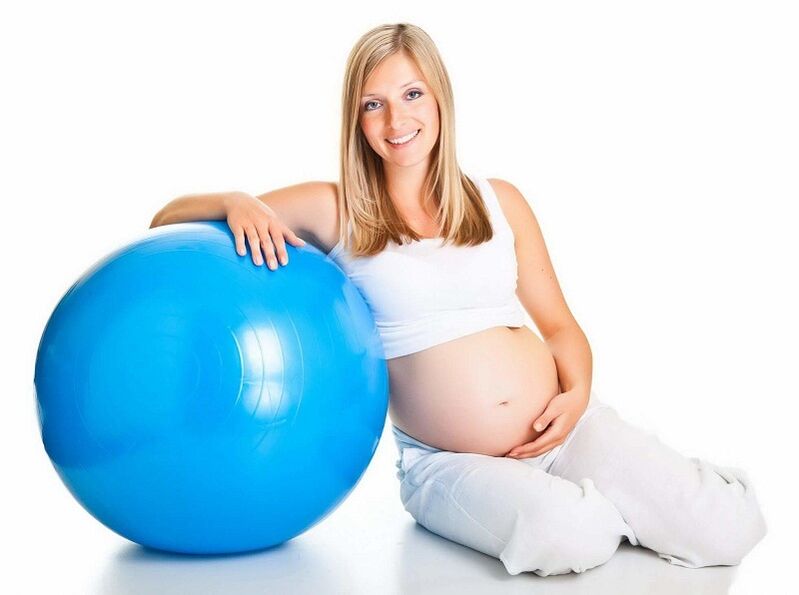
It is one of the natural factors that lead to uncomfortable manifestations in the lumbar spine. When a woman carries a future baby, the size of the uterus and fetus increases, which disrupts the nerve receptors below.
During the last trimester, a pregnant woman's body begins to produce a special hormone - relaxin. This leads to a relaxation of ligaments, tendons, in order to facilitate the passage of the fetus through the birth canal. Because of this, the intensity of the pain can increase dramatically.
Endometriosis
This is a common gynecological disease, against the background of which the internal uterine tissue grows beyond its limits. Endometrioid tissue has an increased sensitivity to hormones synthesized by the body, for this reason, endometriosis manifests itself in monthly bleeding. As a result, inflammation develops, one of the signs of which is pain syndrome, radiating to the lumbosacral region of the spine.
Rules
Painful manifestations of a pulling nature of moderate severity appear in half of women before menstruation or during bleeding. This pain is quite natural and goes away immediately after your period ends. Discomfort can also be felt in the lower back.

The pathological etiology of low back pain during menstruation is indicated by the presence of dyspeptic disorders, diarrhea or constipation, frequent headaches and dizziness. In a similar situation, a woman can be diagnosed with algomenorrhea or menstrual dysfunction.
Breast sizes
The spine in women with large breasts is heavily loaded. If the mammary glands are not properly distributed, the risk of the formation of degenerative-destructive processes increases. Women with large breasts are often hunched, which contributes to the deterioration of the spine.
Uncomfortable shoes
Painful sensations in the lumbar spine that appear at the end of a workday is a common condition among women who walk in tight, high-heeled shoes. This leads to damage to the blood vessels, disturbances in the blood circulation in the lower limbs and pelvic organs. As a result, the nutrition of the intervertebral discs in the lumbar region worsens, which destroys them. The situation worsens due to the increased stress on the spine.
Menopause
During the period of menopause in the female body there is a decrease in the production of estrogen involved in the regulation of recovery processes in the musculoskeletal system. The bone structure loses the ability to fully assimilate the trace elements necessary for its restoration. It becomes brittle, which can lead to frequent fractures. Painful manifestations in the lumbar spine during menopause may indicate bone resorption, the formation of osteoporosis.
Overweight
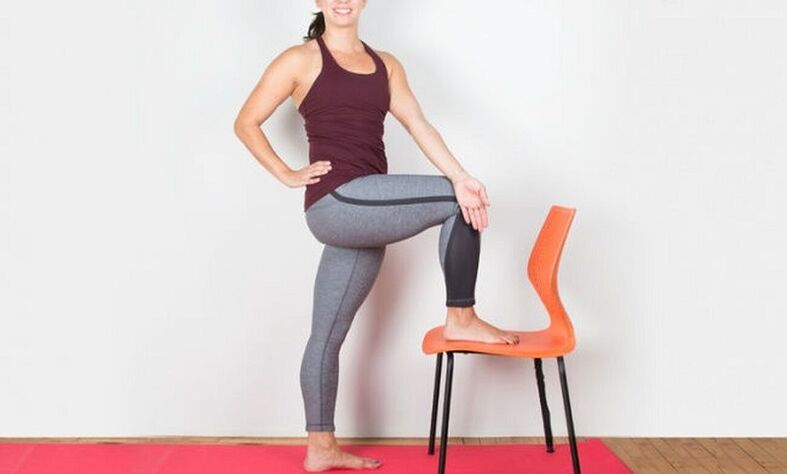
Being overweight is one of the causes of lumbosacral osteochondrosis. Excess weight increases the load on the intervertebral discs, which leads to an increased risk of microtrauma with further destruction of the vertebral tissues.
An overweight person usually does not eat well. Its diet is rich in high calorie foods, and fresh vegetables and fruits containing essential trace elements and vitamins are not consumed in sufficient quantities. With increased loads associated with a lack of useful substances, there is a tendency for the formation of osteochondrosis of the lumbar region.
Oncology
Changes in the genetic structure of cells lead to a violation of the regulation of their growth and reproduction. As a result, pathological proliferation of tissues occurs, the formation of a tumor of a benign or malignant nature.
Pain in the lumbar spine can occur against the background of tumor involvement of sensitive nerve receptors, spine, soft tissue and circulatory system. Calcium is absorbed in large quantities by the neoplasm, due to which a deficiency of this substance develops in the bone tissue, which leads to thinning of the bones.
Hypothermia
Skeletal muscles in the lumbosacral region are often inflamed due to the influence of low temperatures. This becomes the reason for the formation of myositis - a disease that manifests itself as a local pain syndrome in damaged muscles. Its intensity increases considerably during movement and palpation. Against the background of the inflammatory process, there is an increase in muscle tone, which makes the lower back less mobile.
Pain varieties
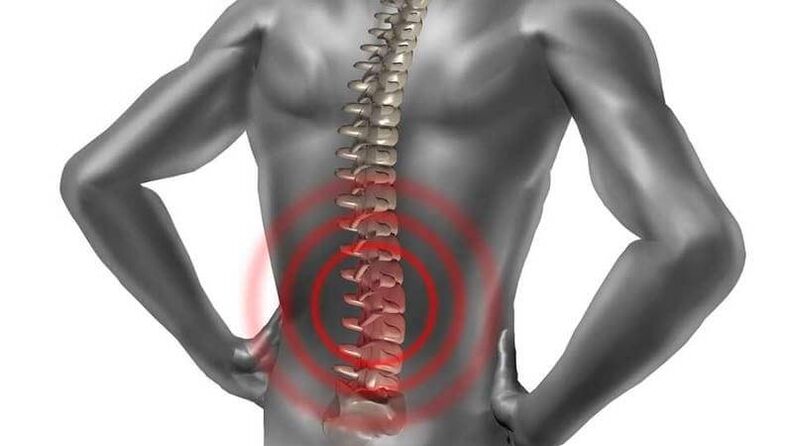
An initial diagnosis can be made based on a detailed description of the disturbing symptomatology. With each disease, pain manifests with different severity, frequency, and condition before it occurs.
Strong pain
This pain syndrome is typical of stages II and III of lumbar osteochondrosis. At this point, significant destruction occurred in the intervertebral discs, and their depreciating characteristics were lost. They are unable to soften the load during movement, which makes the spinal structure unstable.
This leads to soft tissue compression. Severe pain begins to bother even in a still state, developing against the background of twists and turns, loud laughter, coughing and sneezing. In addition, there is a feeling of "goosebumps" and weakness in the muscles.
Sharp pain
The reason for the appearance of acute pain syndrome is the compression of receptors in the spinal canal by osteophytes or discs. This is typical of an attack of lumbago, which is often manifested in rheumatic diseases, lumbosacral osteochondrosis, radiculopathies.
Painful sensations are so pronounced, piercing, burning that the patient is unable to move. Often a person cannot straighten their back for fear that the pain will appear.
It's a dull pain
Pain in the lumbar spine of a dull, aching and pressing character is characteristic of diseases of the internal systems, including the genitourinary and reproductive organs. Such discomfort may indicate the development of osteochondrosis, spondylarthrosis, spondyloarthritis.
The pain is not localized, but can radiate to the hips, buttocks and ankles. Often aching pain is evidence of a destructive process in the spine or inflammation in the internal system.
Chronic pain

Pain of a constant nature in the lower back indicates the transformation of the disease into a chronic disease. It is sharp, strong during relapse, radiating to nearby areas of the body. During the period of remission, slight discomfort appears with hypothermia, physical exertion, exacerbation of other diseases, acute respiratory viral infections.
Pain syndrome increases against the background of bending, rotating the torso, climbing stairs and prolonged walking.
Diagnostic measures
The disease is diagnosed on the basis of the patient's complaints, his visual examination, anamnestic data, the results of instrumental and laboratory diagnostics. X-ray examination is the most informative for identifying problems with the musculoskeletal system. In the resulting image, you can see the altered vertebrae, formed by osteophytes (bone formations).
If the doctor suspects the development of a hernia, protrusion, diseases of the internal systems, ultrasound, MRI and computed tomography are prescribed. Thanks to these diagnostic methods, it is possible to find out where the disease is located, to assess the degree of progression of inflammation.
A clinical study of blood and urine is mandatory. If there is a suspicion of the presence of a systemic disease (gout, rheumatoid arthritis), a biochemical and serological study is carried out.
Which doctor to contact
Often back pain appears after an injury - subluxation of the vertebrae, severe bruising, damage to the spinal canal. In such a situation, you will need the help of a traumatologist.
You can also consult a therapist. Such a doctor can diagnose diseases of the spine, internal systems. After reviewing the results of the diagnosis, he will determine which limited specialist consultation is necessary (rheumatologist, neuropathologist or orthopedist) to prescribe additional treatment.
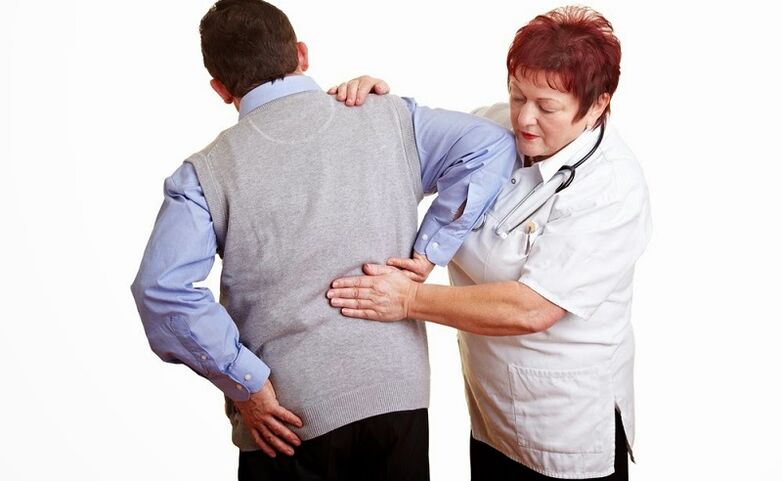
First aid
If there is severe acute pain, the victim should be placed on a hard surface in a position in which the discomfort becomes less pronounced. You can lie down with your knees slightly bent and put a rolled up blanket under them. For quick pain relief, you can take any nonsteroidal anti-inflammatory drug.
Therapeutic actions
Pain relievers can help get rid of back pain. Their effect won't last long if you don't treat the underlying disease properly. Certain pathologies of the internal systems are well treated, in particular oncology. But complete restoration of destroyed intervertebral discs and deformed vertebrae against the background of osteochondrosis is impossible. The goal of therapy is to achieve stable remission, during which pain in the lumbar spine does not bother.
Drug therapy
First of all, for back pain, taking nonsteroidal anti-inflammatory drugs (NSAIDs) in the form of tablets or capsules is prescribed.
In case of oncological diseases, they resort to narcotic pain relievers. If the pain occurs due to a skeletal muscle spasm, muscle relaxants are indicated.
In the treatment of diseases of the internal systems, pain relievers are also prescribed.
Treatment with ointments and gels
Ointments and gels are used to relieve mild to moderate discomfort in the lower back area. Drugs for external use are also included in treatment regimens to reduce the dosage of injections and tablets, in order to reduce the pharmacological load on the body.
For back pain, the use of external agents from the following groups may be prescribed:
- NSAIDs - have anti-inflammatory, analgesic and decongestant effects.
- Warming gels and ointments - have an analgesic, local irritant and distracting effect.
- Chondroprotectors against the background of osteochondrosis - have analgesic and anti-inflammatory effects, stimulate the recovery of the disc.
Injection
When choosing analgesics, the doctor is based on the type of disease, its course, the severity of the pain syndrome. To eliminate the acute pain, they often resort to drug blockages with the help of glucocorticoids and anesthetics. The use of hormonal agents is quite harmful to the body, so such procedures can be performed a maximum of 1 time in 1-3 months.
To eliminate severe pain, NSAIDs are prescribed as injections into the muscle.
Physiotherapy
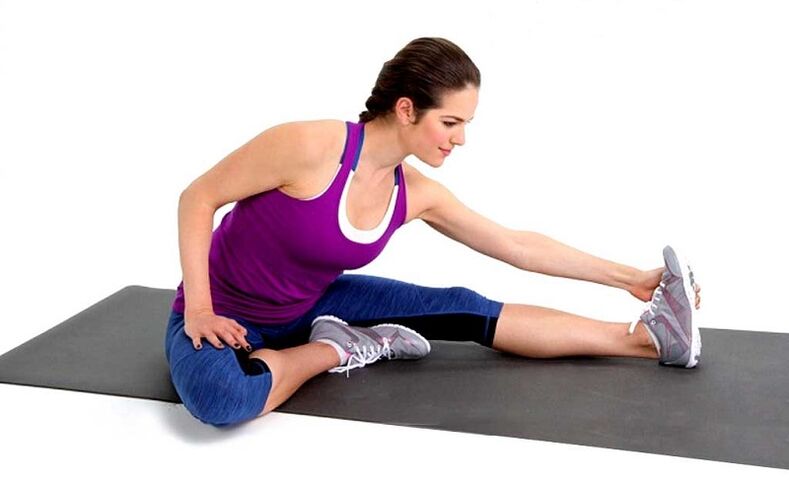
If a disease has already been diagnosed, or in order to prevent its development, experts advise patients to perform therapeutic gymnastic exercises on a daily basis. CA will help:
- improve blood circulation in the lumbar region;
- strengthen the muscular frame of the back;
- reduce the intensity of pain.
The gymnastic complex is developed by the attending physician depending on the type of disease, the complications present and the physical condition of the patient.
Massage treatment
To improve the supply of blood and nutrients to the tissues, to normalize the tone of skeletal and smooth muscles, to strengthen muscles, it is recommended to perform massage:
- classic;
- indicate;
- segmental;
- canned.
Massage is prescribed both for therapeutic purposes and to prevent the development of an exacerbation during the chronic course of the pathology.
<10_img_centerxx>Heat and cold treatment
The effect on the lumbar spine with heat helps to eliminate pain, but only after the acute inflammatory process has stopped. For these purposes, a heating pad, heating ointment or gel, bath is suitable.
Under the influence of cryotherapy (cold treatment), adaptation systems are activated. At the heart of this physiotherapeutic procedure, the body's response is not hypothermia of the outer layers of the skin.
Preventive actions
It is possible to prevent the onset of pain in the lumbar spine by excluding the factors that may provoke the onset of the problem. It is necessary to stop walking with high-heeled shoes, in order to minimize the consumption of high-calorie foods. Regular sports, swimming and yoga are good prophylaxis.













































